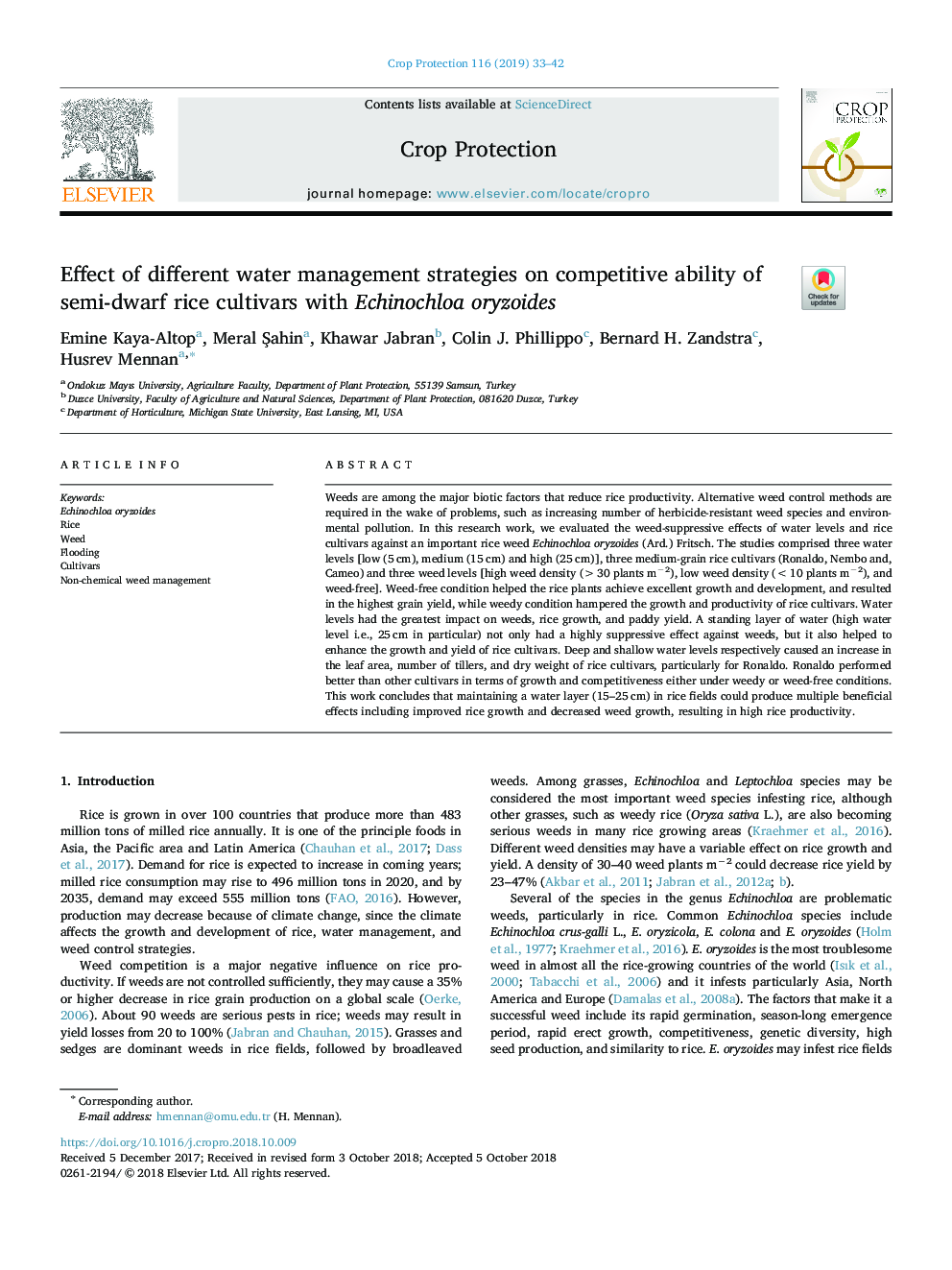| Article ID | Journal | Published Year | Pages | File Type |
|---|---|---|---|---|
| 11013007 | Crop Protection | 2019 | 10 Pages |
Abstract
Weeds are among the major biotic factors that reduce rice productivity. Alternative weed control methods are required in the wake of problems, such as increasing number of herbicide-resistant weed species and environmental pollution. In this research work, we evaluated the weed-suppressive effects of water levels and rice cultivars against an important rice weed Echinochloa oryzoides (Ard.) Fritsch. The studies comprised three water levels [low (5â¯cm), medium (15â¯cm) and high (25â¯cm)], three medium-grain rice cultivars (Ronaldo, Nembo and, Cameo) and three weed levels [high weed density (>30 plants mâ2), low weed density (<10 plants mâ2), and weed-free]. Weed-free condition helped the rice plants achieve excellent growth and development, and resulted in the highest grain yield, while weedy condition hampered the growth and productivity of rice cultivars. Water levels had the greatest impact on weeds, rice growth, and paddy yield. A standing layer of water (high water level i.e., 25â¯cm in particular) not only had a highly suppressive effect against weeds, but it also helped to enhance the growth and yield of rice cultivars. Deep and shallow water levels respectively caused an increase in the leaf area, number of tillers, and dry weight of rice cultivars, particularly for Ronaldo. Ronaldo performed better than other cultivars in terms of growth and competitiveness either under weedy or weed-free conditions. This work concludes that maintaining a water layer (15-25â¯cm) in rice fields could produce multiple beneficial effects including improved rice growth and decreased weed growth, resulting in high rice productivity.
Related Topics
Life Sciences
Agricultural and Biological Sciences
Agronomy and Crop Science
Authors
Emine Kaya-Altop, Meral Åahin, Khawar Jabran, Colin J. Phillippo, Bernard H. Zandstra, Husrev Mennan,
